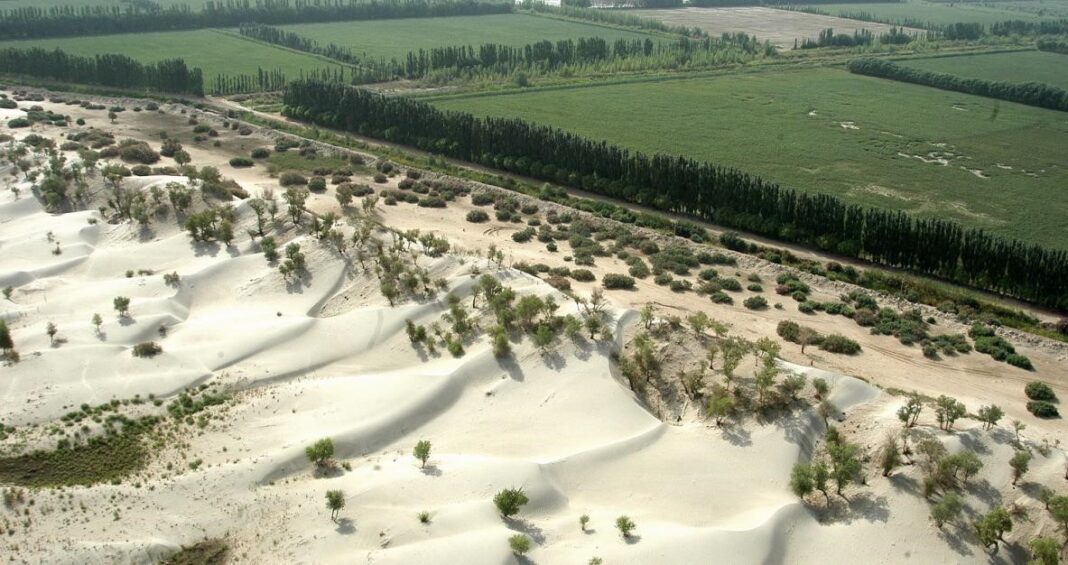By Yin Jie
More and more people are going out to enjoy the beauty of spring in Aksu prefecture, northwest China’s Xinjiang Uygur autonomous region, as the temperature gets warmer.
Water birds are always seen taking off from rivers and lakes in a national wetland park in Asku, and green corridors and rivers that cross the prefecture have made the urban landscape more dynamic.
Since 2012, five ecological restoration and desertification control projects have been completed in Aksu prefecture, each covering an area of over 100 million mu, or 66.667 hectares.
In 2021, the prefecture’s three-year holistic conservation and restoration project for mountains, rivers, forests, farmlands, lakes, grasslands, and deserts in important source regions of the Tarim River became one of the first of its kind implemented in China during the 14th Five-Year Plan period (2021-2025).
The Tarim River runs through most parts of the Tarim basin, the largest basin in China. It is the lifeline for Xinjiang’s economic development, ecology, and livelihood.
The Aksu River is the most important headstream in the upper stream of the Tarim River. To restore the ecology in the Aksu River remains crucial to safeguarding the ecological security in the Tarim River and even in Xinjiang at large. The Aksu River crosses various types of landforms, including glacier, snow-capped mountains, deserts, forest, grassland, and farmland.
The three-year holistic conservation and restoration project covers the whole Aksu River basin. Different from traditional treatment models that target at only one ecosystem, the project sees mountains, rivers, forests, farmlands, lakes, grasslands, and deserts as a whole and includes 35 sub-projects in five categories, including sand fixation, oasis ecology, water ecology restoration, grassland and forest ecological conservation, and building a community of life for man and nature.
A rock spire ecological restoration project implemented by Wensu county is an important one among the 35-sub projects. The rock spires, stretching 34.3 kilometers between downtown Aksu and Wensu county, are indeed mountains weathered by wind and sands. These spires collapse easily and nothing grows on them, which has negative impacts on the life of the local community.
The rock spire ecological restoration project will level these spires and build an ecological corridor on them. Besides, it will also be aligned with a cultural tourism project in Wensu county so that ecological restoration achievements can be translated into economic and social benefits.
As of the end of 2022, Aksu prefecture had completed ecological conservation on 1,760 square kilometers of land, restored ecology on 9.9 square kilometers of mine pits, and repaired 363 kilometers of river banks. Besides, it also covered 10,538 hectares of land with vegetation, finished land consolidation of 18,000 hectares, and treated water and soil erosion on 238 hectares of land.






